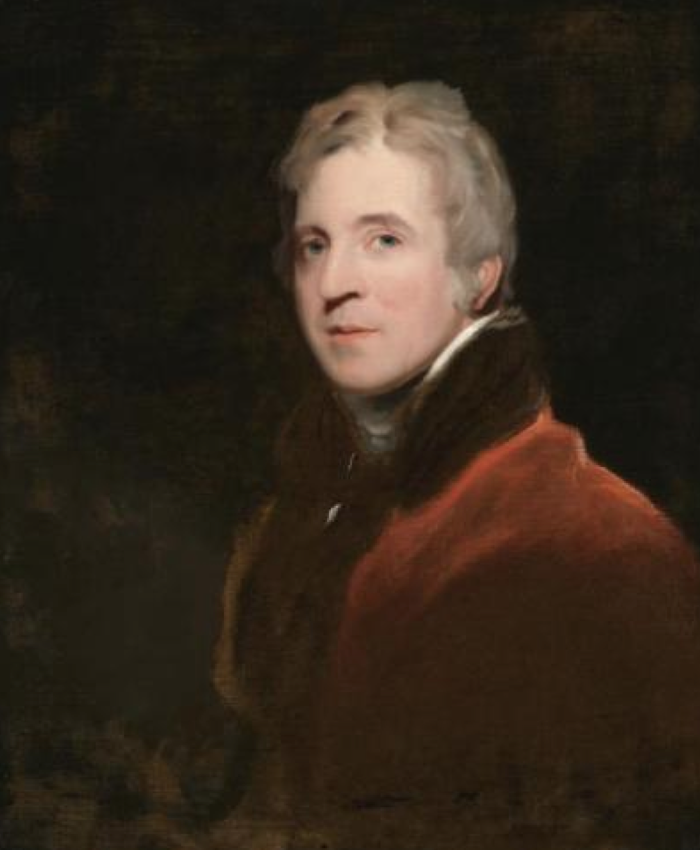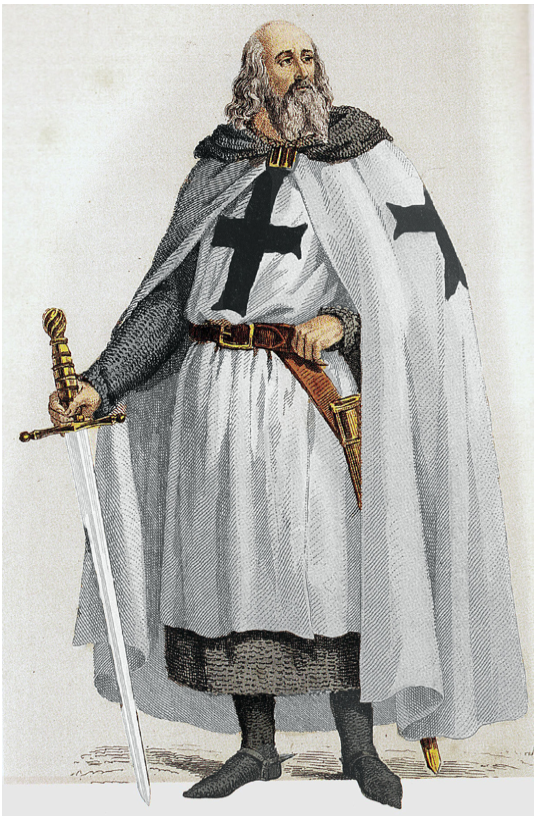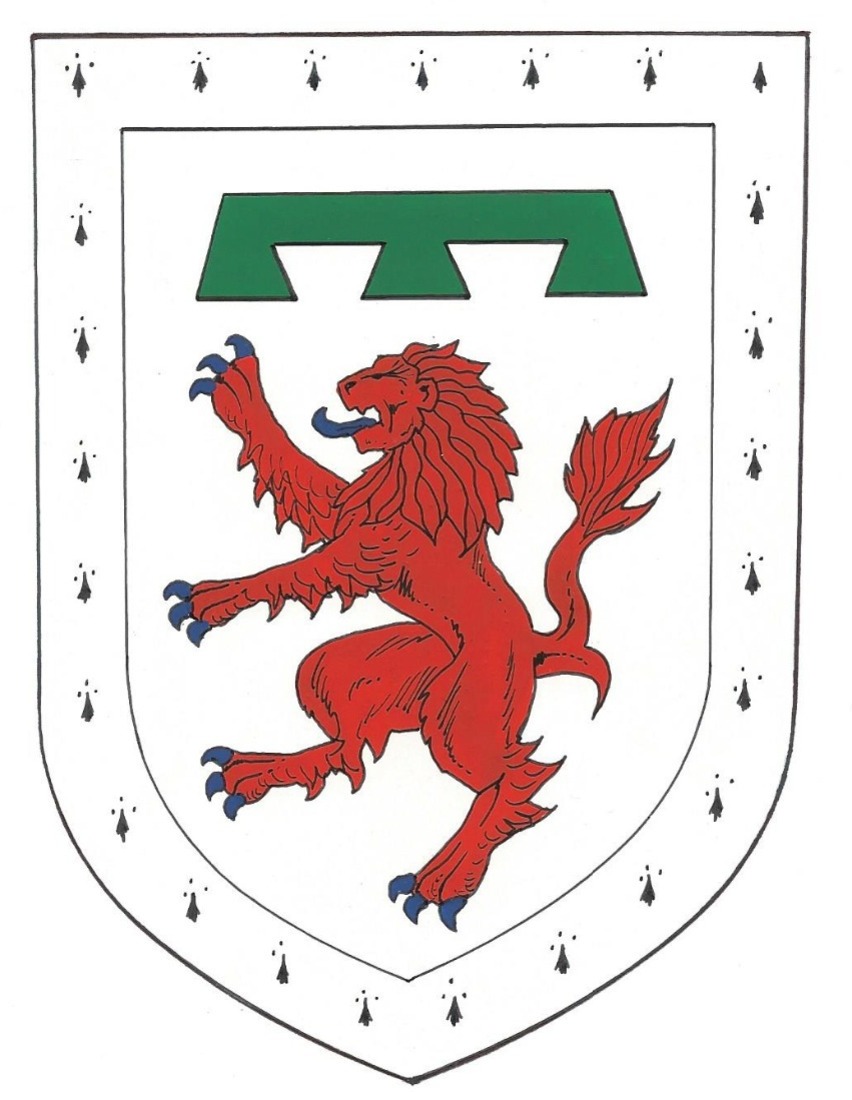Sir George Beaumont
Sovereign Grand Commander 1815-1825


The Beaumont family are another of the Anglo-Norman families that came over with the Norman invasion and Humphrey or Honfray de Vieilles (980-1044) is said to be the first holder of the “grand honoure” of Beaumont le Raze in Normandy and founder of the House of Beaumont. He was married to Albreda or Alberee de la Haye Aubere. The Hays, another of the Sovereign Grand Commander families, finished up in Scotland becoming Earls of Erroll.
According to the chronicler Robert of Torgini, Humphrey was the son of Thorold de Pont-Audemer. His mother was Duvelina sister of Gunnara, concubine of Richard II Duke of Normandy and so Humphrey and the Beaumont’s were kinsmen of the Norman Dukes. He had three children, two boys and a girl and Torgini relates that Thorold was the brother of Turqetil the father of the Harcourt family founder Ansketil de Harcourt.
N.B Rene II, grandson of our founder and Sovereign Grand Commander 1485-1508 succeeded his uncle John of Vaudmont as Count of Harcourt in 1473.
One of Humphrey`s sons were Roger de Beaumont (1015-1094) and a second cousin once removed to William the Conqueror. His sister Josceline married Hugh Seigneur de Montgomerie. Their son Roger de Montgomerie became the Earl of Shrewsbury and Earl of Arundel.
John (Jean) de Brienne* a penniless younger son of Count Erard II of Brienne had a change of fortune when King Phillip II Augustus of France arranged his marriage to Marie de Montferrat, Queen of Jerusalem. She was the daughter of Conrad de Montferrat and Isabella of Jerusalem whose father was Amalric King of Jerusalem and Count de Anjou. John of Brienne was married three times and his third wife Berengaria of Leon was a cousin of King Louis IX of France who made John Grand Chamberlain of France. Their son Louis`s second wife was Agnes, Vicomtesses de Beaumont au Maine.
Frederick II de Gonzaga, later Duke of Nevers and brother of Ferrante de Gonzaga another Sovereign Grand Commander of the Lys, married Marguerite de Montferrat who was a Paleologue (the Greek Byzantine Imperial Family who produced the last ruling dynasty of the Byzantine Empire and a branch of that family became feudal lords of Montferrat in Piedmont, Italy). Their line continued and William de Gonzaga married Eleanor von Habsburg with William de Gonzaga marrying Henrietta of Cleves, Duchess of Nevers.
As a result of the above we can now see the link between the Beaumont’s, Harcourt’s, Montgomery’s, Habsburgs Gonzagas, Anjou and the Kings and Queens of Jerusalem.
In England two branches of the Beaumont family were granted Honours with one line becoming Barons and the other Baronets. The Baroncy was first created in 1309 for a younger branch of the de Brienne family, the initial recipient being Henry de Beaumont, Earl of Buchan. The 2nd Baron was the husband of Eleanor of Lancaster, Countess of Arundel. The 3rd Baron also called Henry married Margaret daughter of John de Vere 7th Earl of Oxford and the 4th Baron who became Admiral of the North and the Ambassador to France was a half brother of Margaret Sinclair.
The 6th Baron John Beaumont also became 1st Viscount Beaumont on the coronation of King Henry IV and later Knight of the Garter. The baroncy was held until 1507 when the 7th Baron and 2nd Viscount died without issue and the titles were held in abeyance between the two daughters Joan Lady Stapleton and Frideswide Lady Norris of his only sister Joan Lady Love.
IN MAY 1536 SIR HENRY NORRIS THE ONLY SURVIVING SON OF FRIDESWIDE, LADY NORRIS WAS ATTAINED AND BEHEADED ON A CHARGE OF ADULTERY WITH ANNE BOLEYN.
In 1840 the Baroncy. was called out of abeyance in favour of Miles Thomas Stapleton 8th Baron. The line continued until 1895 when it again fell into abeyance on the death of the 10th Baron between his two daughters Mona Josephine Stapleton and Ivy Mary Stapleton and was called out of abeyance in favour of the eldest daughter Mona. Her eldest child and first-born son Francis later became the 17th Duke of Norfolk and the Baroncy of Beaumont has thus been held by the Dukes of Norfolk since 1975.
In England there has been four baronetcies created for the Beaumont family and the first were the Beaumont’s of Coleorton (or Cole Orton) in Leicestershire which was created in 1619 for Thomas Beaumont who was knighted by King James I and later raised to the peerage as Viscount Beaumont of Swords (an Irish Peerage, Swords being a town in County Dublin). This Thomas Beaumont was a descendant of John Beaumont 4th Baron Beaumont. The titles became extinct on the death of Thomas’s grandson the 3rd Viscount.
The second baronetcy was that of Grace Dieu also in Leicestershire and was created in 1627 for the poet John Beaumont of the Grace Dieu Manor (his father was the judge Sir Francis Beaumont and his younger brother the dramatist Francis Beaumont. He was also a descendent of the 4th Baron Beaumont. He was succeeded by his eldest son who fought in the English Civil War as a Colonel in the Royalist Army and was killed in action during the Siege of Gloucester in 1643. On his death the baronetcy passed to his younger brother and as the 3rd Baronet of Grace Dieu had no sons this baronetcy became extinct in 1686.
In 1628 a baronetcy of Whitely in Yorkshire was created for Richard Beaumont, Member of Parliament for Pontefract. He never married and the title became extinct on his death in 1631.
We now turn to another branch of the family which contained the person who is the Sir George Beaumont who became head of the Ordre du Lys and as we have seen above there can be no doubt as to the lineage and therefore the right of this family to succeed to the title.
This fourth baronetcy, that of Stoughton Grange was founded by Thomas Beaumont another younger son who took the side of Parliament during the Civil War, served on the Committee for the New Model Army, represented Leicestershire under the Protectorate and was created a baronet by Oliver Cromwell in 1658.This title was deemed invalid at the time of the Restoration, however in 1661 it was restored by King Charles II.
Thomas Beaumont the 4th baronet was a Member of Parliament and served on the board of the Admiralty. and in 1702 he inherited the Coleorton estates.
We now jump to the 7th Baronet Sir George Howland Beaumont who was born in 1753 and died in 1827 and as such is the only Beaumont whose dates fit in with the Sir George Beaumont who was Sovereign Grand Commander. This Sir George was the only son of the 6th baronet from whom he inherited the title in 1762.Educated at Eton College he later married Margaret daughter of John Willes MP and a granddaughter of the John Willes who had been a judge on the Chester circuit, later becoming Attorney General and then Chief Justice of the Court of Common Pleas and a Privy Councillor.
Sir George the 7th baronet was a gifted amateur artist and poet having a network of acquaintances which included Lord Byron, William Wordsworth Thomas Southey, Sir Joshua Reynolds, John Constable Dr Samuel Johnson, Sir Walter Scott and Sir Humphrey Davy. A Member of Parliament for six years he became a member of the Monuments Committee for St Paul’s Cathedral, a trustee of the British Museum and a founder of the British Institute (an organisation set up to exhibit the works of British artists living and dead). He was also instrumental in setting up the National Gallery donating sixteen of his own paintings to that body when it first opened in a house in 1824 in Pall Mall London. There were artists and poets amongst the Montgomery’s and possibly this and the Beaumont’s earlier intermarrying with various branches of the Montgomery family led to the appointment of the 7th Beaumont Baronet as Sovereign Grand Commander. With regard to the poets, one who became quite prominent during that time was James Montgomery, born in Irvine, Ayrshire, Scotland but moved to England at an early age and lived in Sheffield for most of his life (there is even a memorial statue of him in the grounds of Sheffield Cathedral). He was an acquaintance of Lord Byron, Wordsworth and George Beaumont.
There was obviously some direct link with the family when we consider that Beaumont followed on from Hugh Montgomery of Grey Abbey and was succeeded by Robert Montgomery of Comber.
Sir George died childless at Coleorton Hall and his title was inherited by the 8th Baronet his cousin George Howland Willoughby Beaumont. This line of the Beaumont ancestry continued until the death of the 12th baronet in 2011 when it became extinct. The 8th Baronet who had served during the Second World War had two daughters one who was named Georgina Brienne, harking back to the family’s ancient antecedents. Another interesting point is that he was educated at Stowe School, the same school at which our Assistant Sovereign Grand Commander Jonathan Sayer teaches.
Of further interest is the appearance of the name Willoughby one of those held by the 8th Baronet, for we find that there was a branch of the Willoughby- Montgomery’s in Northern Ireland. In 1702 Colonel Hugh Montgomery who according to Burkes Landed Gentry, was the last heir in remainder to the Viscounty of Montgomery of the Great Ards which became extinct in 1757, married Elizabeth, widow of Nicholas Willoughby and assumed the name of Willoughby-Montgomery. In 1746 a Catherine Willoughby Montgomery married Alexander Montgomery of Ballyleck. According to Burke`s Commoners, another relation, Robert Montgomery of Convoy House in Donegal sired four children the youngest, his only daughter Judith Susanna Montgomery married Captain Thomas Montgomery RN. They had seven children, the eldest a son George Samuel Montgomery became a Brigadier General, their second son Thomas Alexander Montgomery married Elizabeth Beaumont
–James with another son being called John Willoughby Montgomery.
*. Geoffroy de Charnay who was burned at the stake together with Jacques de Molay head of the Knights Templars was linked through marriage to the Brienne and Joinville families


























